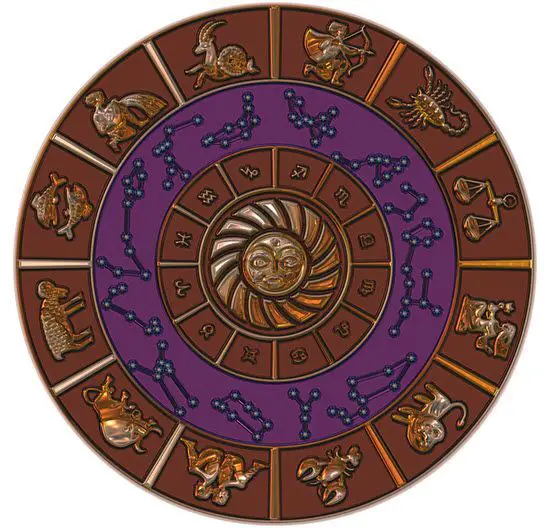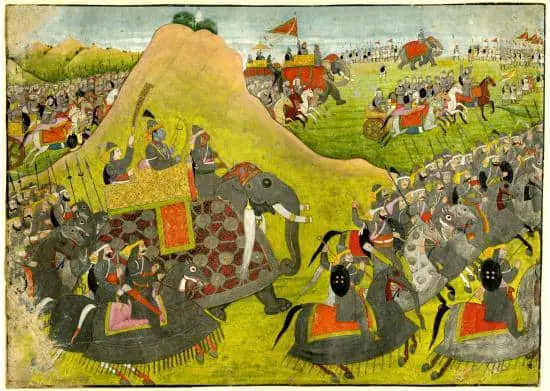The Sanatan Dharm, or Hindu Religion, is one of the oldest Religions in the world. Being one of the oldest Religions, it has one of the oldest Date Systems in the world too. However, there is another fact that is so astonishing. There is Cultural diversity in Hindu Religion and also Diversity in Date Systems.
Would you believe that as many as 30 date systems were prevalent in India in different parts of the country?
So there is a general query among most people who ask How does the Hindu calendar Work?
There is also the question of why there are so many date systems in India and which calendar system is correct. People usually ask how many days there are in the Hindu Calendar System.
These are the basic questions that ponder the mind of most people in India. We have tried to answer these questions and clarify doubts regarding how Hindu Calendar Works and other related questions.
Table of Contents
How Hindu Calendar Works – Hindu Calendar System
Hindu Civilization is one of the oldest civilizations, and like other old civilizations, it follows the lunar cycle to mark its calendar system. So Hindus follow the moon as other agricultural societies did in ancient times. As far as the lunar cycle is concerned, it is between 28 days to 31 days. A lunar month consists of a ‘bright’ fortnight and a ‘dark’ fortnight, which marks the moon’s waxing period and the moon’s waning period. In the lunar cycle, a year has 354 days, 8 hours, and 34.28 seconds.
The Hindu Civilization was a well-developed Civilization, and like other developed civilizations, it was well aware of other heavenly bodies and date systems such as Sun, Venus, and Jupiter. Most of them are based on the Solar Cycle and follow the Sun date system. So Hindus were well aware of Solar Date System, and their Solar Year started at the Spring Equinox, and the Solar Year consisted of 365 days, 6 hours, and 9.54 seconds.
The two cycles of Solar and Lunar in nature coincide for a number of years. Hindus have added an “extra” month every three years to bring these two cycles together for practical purposes. This happens when 29 days, 12 hours, 44 minutes, and 2.865 seconds have accumulated between the Solar Cycle and Lunar Cycle cycles.

An extra month brings these two Calendar Systems into synch. The timing of adding the extra month depends on the lunar cycle. Actually, this needs a little explanation. Usually, Sun migrates into a new zodiac each month. When Sun does not migrate into a new zodiac and remains in the same sign for two consecutive months, that month is taken as the ‘extra’ month. It is known as the Adhik Maas. It is also known as “Purshottam” Maas.
Talking the Western Calendar is essentially a Solar Calendar System in which a month alternates between 30 and 31 days, and a day is added every 4th year to regulate the Calendar.
The Hindu New Years
As mentioned earlier in this post, there are actually various Calendar Systems in the Hindu calendar; however, officially, there are two Calendar Systems that are now recognized. These are known as Vikram Samvat and Shaka Samvat.
In the Vikram Samvat Hindu Calendar System, the New Year starts on the Deepavali date (Oct- Nov), which also marks the crowning of King Vikramaditya of Ujjain in 56 BC. The other Hindu Calendar System marks the crowning of the Shalivahan King in 78 AD. According to this Hindu Calendar System, the New Year is started on the date of Gudi Padwa (in the month of March – April).
In addition to these officially recognized Hindu New Year Calendar Systems, many other Calendar Systems exist in our culturally diverse society of India. Different Cultural Markers decide the Hindu New Year in our culturally diverse Societies and geographically big societies.
Some communities use astronomical events as their New Year in the Hindu Religion. For example, the day of Makar Sankranti (14 Jan – 15 Jan) marks the New Year in Southern India. On this day, Sun enters the sign of Capricorn, and this day is celebrated as ‘Pongal,’ which is New Year in Southern India.
Like cultural markers, there are strong “natural markers” which mark Hindu New Year in India. Some of these examples are Vasant Panchami, Pongal, Bali Pratipada, and Baisakhi, which are also celebrated as New Year in different communities in different parts of India.
Officially Shaka Samvat is considered the Hindu New Year by the Indian Government. While Bali Pratipada, which is known as Gudi Padvo, which signals the start of summer, is considered the New Year in the Western part of India.
Besides the above Hindu New Years, there are new years in Hindu Culture based on Communities. For example, Brahmins celebrate Guru Poonam as New Year. Then there are Kshtriyas, who celebrate Dussehra as their New Year. Vaishyas Community considers Diwali as their New Year, while Sudras celebrate Holi as their New Year in the Hindu Calendar System.
Hindu Months Name
Hinduism, one of the world’s oldest religions, follows a lunar calendar. This calendar consists of 12 months, each with its unique name and significance. These names have been passed down through generations and are essential to Hindu culture and tradition.
The first month in the Hindu calendar is Chaitra, which falls between mid-March to mid-April. It marks the beginning of the new year for many Hindus and is also considered the month of new beginnings.
The second month is Vaisakha, which falls between mid-April to mid-May. It is also known as the month of growth and is significant for farmers as it marks the beginning of the harvesting season.
Jyaistha is the third month of the Hindu calendar and falls between mid-May to mid-June. It is known as the month of heat and is associated with Lord Shiva.
Ashadha is the fourth month, falling between mid-June to mid-July, and is the beginning of the monsoon season. This month is also significant for Hindus as it marks the beginning of Chaturmas, a four-month fasting and devotion period.
Shravana is the fifth month, falling between mid-July to mid-August. It is associated with Lord Shiva and is considered an auspicious month for Hindu weddings.
Bhadrapada is the sixth month and falls between mid-August to mid-September. It is significant as it marks the birth of Lord Ganesha, one of the most popular Hindu deities.
The seventh month is known as Ashwin and falls between mid-September to mid-October. It is considered an essential month for Hindus as it marks the beginning of the festival season, including Navratri and Diwali.
Kartik is the eighth month, falling between mid-October to mid-November, and is associated with Lord Vishnu.
Margashirsha is the ninth month and falls between mid-November to mid-December. It is significant as it marks the beginning of the winter solstice and is associated with Lord Krishna.
Pausha is the tenth month, falling between mid-December to mid-January, and is known as the month of harvest.
Magha is the eleventh month and falls between mid-January to mid-February. It is associated with Lord Vishnu and is an auspicious month for Hindu rituals and ceremonies.
The twelfth and final month is Phalguna, falling between mid-February to mid-March. It is significant as it marks the beginning of the Holi festival, also known as the festival of colors.
In conclusion, the names of the Hindu months carry great significance and are deeply embedded in Hindu culture and tradition. Moreover, these names help organize the lunar calendar and hold religious and cultural importance for Hindus worldwide.
| April | चैत्र- वैशाख | अप्रैल | Chaitra (30/ 31* Days) | Begins March 22/ 21* |
| May | वैशाख- ज्येष्ठ | मई | Vaisakha (31 Days) | Begins April 21 |
| June | ज्येष्ठ – आषाढ़ | जून | Jyaistha (31 Days) | Begins May 22 |
| July | आषाढ़- श्रावण | जुलाई | Asadha (31 Days) | Begins June 22 |
| August | श्रावण – भाद्रपद | अगस्त | Shravana (31 Days) | Begins July 23 |
| September | भाद्रपद – आश्विन | सितम्बर | Bhadra (31 Days | Begins August 23 |
| October | आश्विन – कार्तिक | अक्टूबर | Asvina (30 Days) | Begins September 23 |
| November | कार्तिक – मार्गशीर्ष (अगहन) | नवम्बर | Kartika (30 Days) | Begins October 23 |
| December | मार्गशीर्ष – पौष | दिसम्बर | Agrahayana (30 Days) | Begins November 22 |
| January | पौष – माघ | जनवरी | Pausa (30 Days) | Begins December 22 |
| Feburary | माघ – फाल्गुन | फरवरी | Magha (30 Days) | Begins January 21 |
| March | फाल्गुन – चैत्र | मार्च | Phalguna (30 Days) | Begins February 20* leap year |
The Hindu Calendar System and their New Year are our Cultural Heritage, resulting from our Ancient Civilization. The Hindu Cultural Diversity allows us to regard natural, cultural, and community markers as a New Year, consider Life as a Celebration, and rejoice in the name of God through the Hindu Calendar System.




